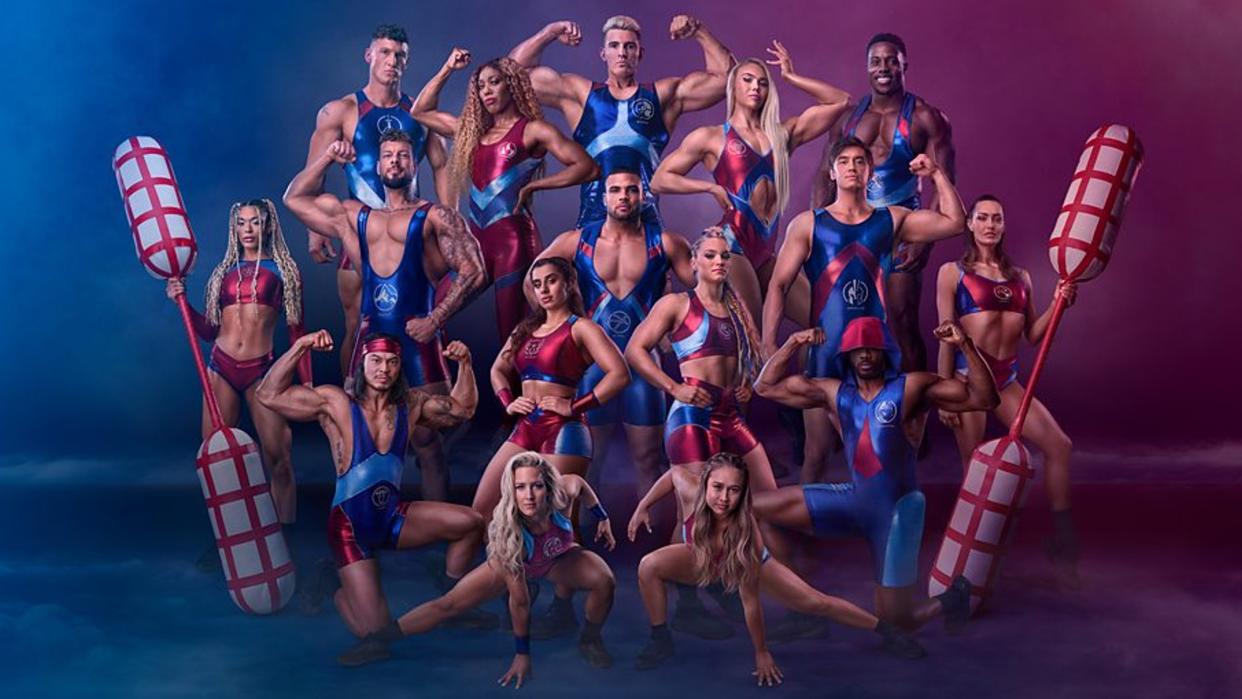Gladiators reboot and the return of linear teatime TV

More than 30 years after their first outing on ITV, the Gladiators have re-entered the TV arena, with the first episode broadcast on BBC One last Saturday.
"This camp, sweaty, Saturday-night entertainment" delivers a "sugary old-school rush", said Jack Seale in The Guardian.
The format – "physical challenges in which members of the public with fitness addictions and mild narcissism take on retired athletes with shiny leotards and severe narcissism" – remains the same, with "contenders" – two women and two men in each hour-long episode – competing in games against Gladiators, before going head to head in the final obstacle course event, the Eliminator.
Who is taking part?
"The original series was dominated by ex-squaddies and county athletes," said The Independent, but in this remake "both the Gladiators and the contestants are prime physical specimens, rather than ordinary people".
The Gladiators are "a new cohort of sprinters, gymnasts and bodybuilders, with stage names such as Giant, Fire, Electro, Nitro and Comet", said The Guardian. Each enters the arena to their signature track, and performs their signature moves, in a "90s fever dream of glittering Spandex and rippling muscles", said The Independent. It is "pure theatre".
David Brown, TV critic at Radio Times, agreed, telling BBC Radio 4's The Media Show that "it had a kind of pantomime feel". There are two new love-to-hate Gladiators to take on the mantle of Wolf from the first series: "Legend, who described himself as a cross between Gandhi and David Hasselhoff", and "Viper, who scowled so consistently throughout the whole hour that I thought that shiny Spandex suit was chafing in a delicate area".
Between-bout bants comes from father-and-son team Bradley and Barney Walsh, with Bradley "as smooth and funny as ever" while his son seems to be "struggling", standing "Playmobil-stiff in his new blue suit, waiting for his turn to speak", said The Guardian.
And football commentator Guy Mowbray's "considered tones are not the natural accompaniment to 1,000 pumped studio audience members waving foam fingers and singing Another One Bites the Dust, because someone who once nearly won a bronze in Commonwealth Games powerlifting has just pushed an IT engineer from Leeds off some oversized playground equipment", the paper added.
Overseeing fair play on the floor is former Premier League referee Mark Clattenburg, with a "nice rasping urgency" to his decisions.
What do the games involve?
Most games are familiar, such as Duel, "where the gladiator pokes the contestant with a giant spongy cotton bud until they fall off a plinth", and Hang Tough, where a contender clings to swinging rings while a gladiator attempts to "yank them off", said The Guardian.
But there are a couple of new challenges. Collision involves contenders running across a wobbly bridge and throwing balls into baskets, dodging Gladiators swinging from ropes "set at a height that means the runners' faces are constantly buffeted by overdeveloped bums and thighs".
However, there aren't many games "where anyone with a rational sense of their own performance ability should expect to last more than a few seconds", advised The Independent.
What does it mean for linear TV?
In another nod to nostalgia for pre-catch-up times, this new series is being shown as linear TV – meaning programmes are broadcast on a predetermined schedule – with all viewers watching at the same time.
At its peak, the original series attracted a "huge 14 million viewers", said Virgin Radio, and it appears that "fans were itching for the reboot to hit the small screen" because episode one drew 6.4 million viewers at its peak.
And the new viewing figures have surprised some. They offer "a wake-up call to those confidently predicting the demise of linear TV", said Clean Feed. "Nobody would have expected the return of Gladiators to get 6m viewers", and it came as a "real shock".
Such numbers show the power of a tried-and-tested package to attract an audience. "There's a term for this: microwave TV, where you reheat a format," said Brown, adding that the January launch also played a part in its initial success. "Everyone's broke, it's too cold to go out, you want to keep that celebratory, Christmassy feeling going, and we want something that brings us all together, across the generations."
It also demonstrates how on-the-night and catch-up TV can work together to boost overall viewing totals. "Linear TV is actually working in a kind of symbiotic relationship with the streaming services," said Brown, when "interest is sparked on the evening" then people find out more on catch-up and perhaps return to watch it on terrestrial TV.
But, fundamentally, "there is a simple, unalloyed joy in seeing people getting smashed in the face with a giant Q-tip", said The Independent. "It is a pleasure that doesn't bear over-analysis."

